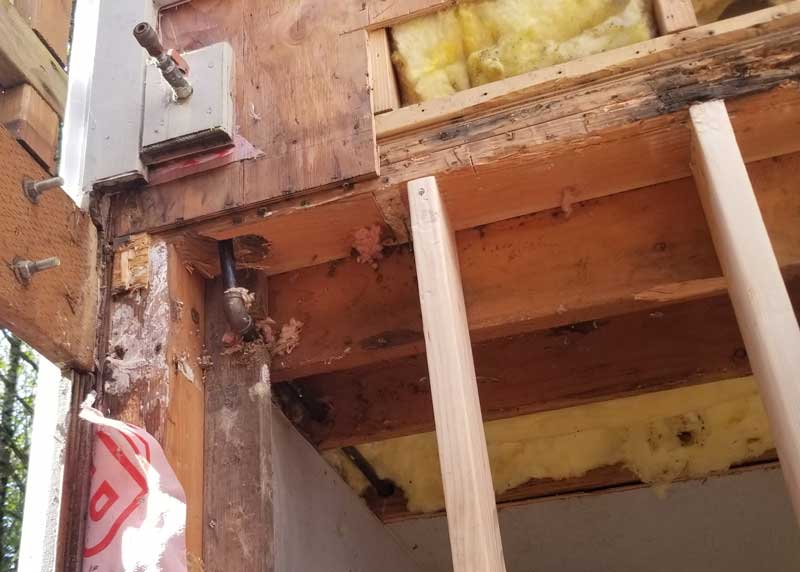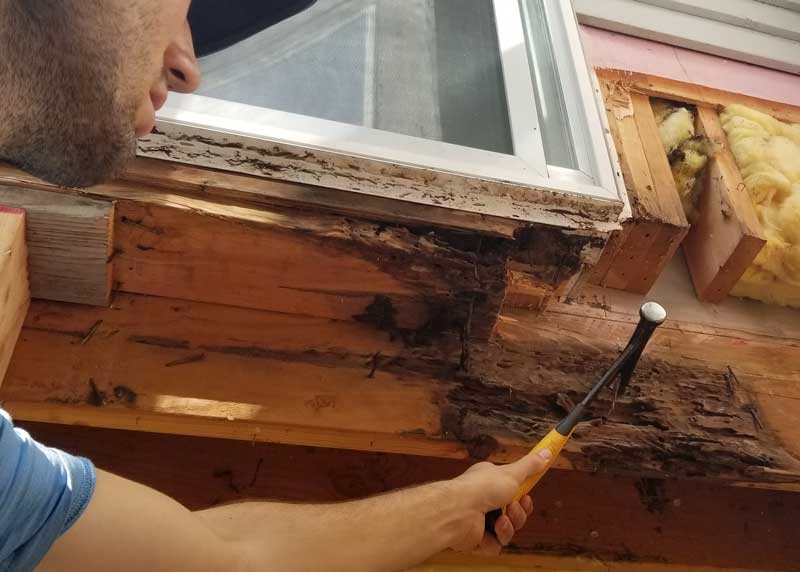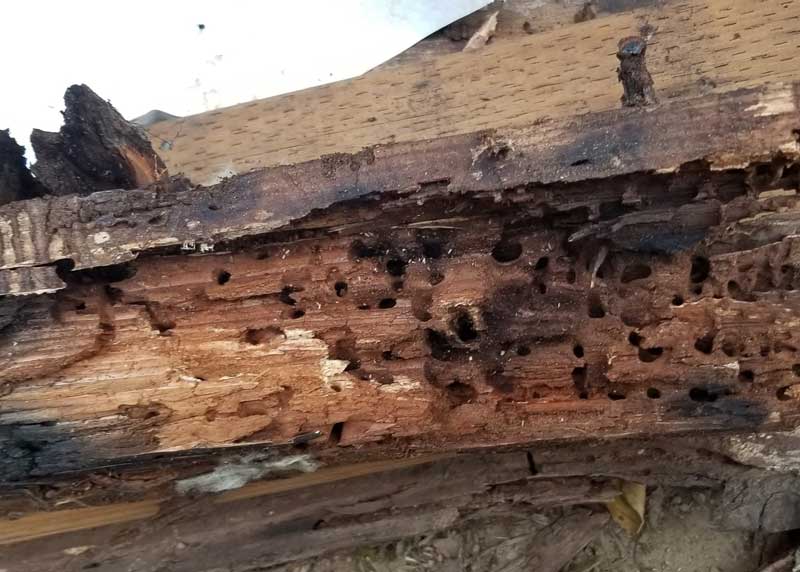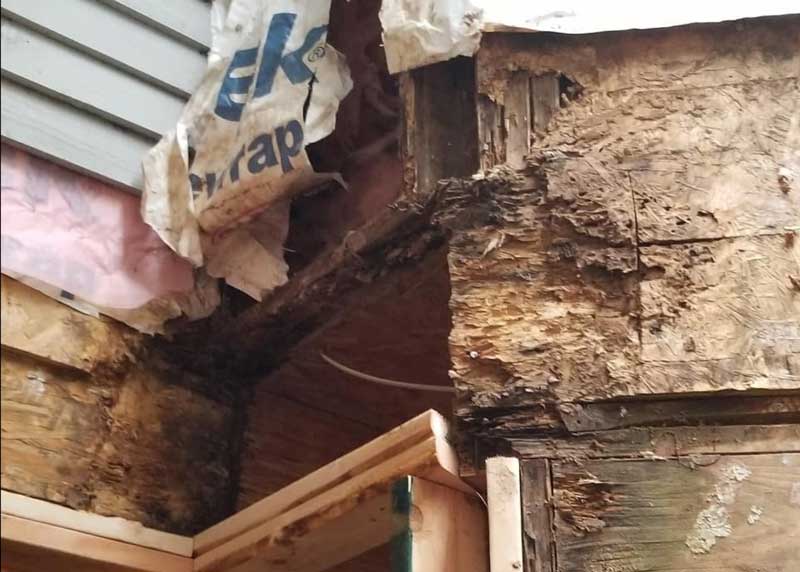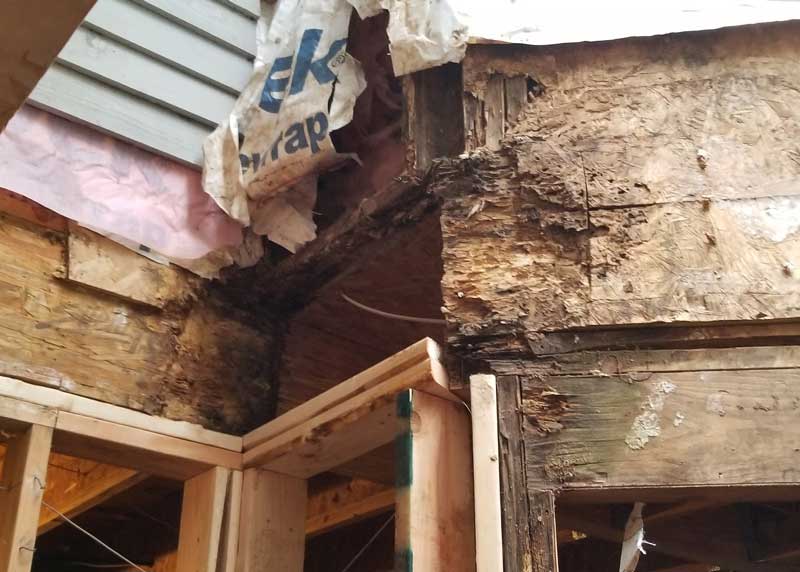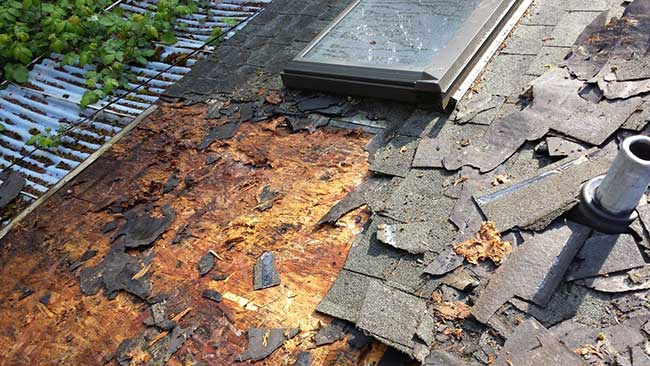Dry Rot Repairs
Dry-rot is a fungal decay of wood that needs three things: the fungal spores, moisture and food (the wood in your house). Fungal spores can be found anywhere. The food you probably are wanting to keep in its current location. That leaves moisture as the easiest thing to eliminate.
So you haven’t done any exterior maintenance or dry-rot repair in a while and now you are looking for a contractor to take care of some soft spots. They might be at the bottom of your T-111 siding. They might be in the the combed primed spruce corner boards or window trim on your 3 year old tract home.
How do we assess dry rot damage?
The very first thing that we do when we evaluate a house is the gutters and downspouts. We are not really remedying the problem if we fix dry-rot but leave the moisture problem. Assuming that everything was built fairly well to begin with, what we most often find as contributing factors are dirty gutters/downspouts, insufficient attic venting, barkdust or dirt against siding or mature landscaping that will not allow the siding to dry. Any one of these things can turn a minor caulking problem into a nasty, expensive issue.
What can you do to lower the cost?
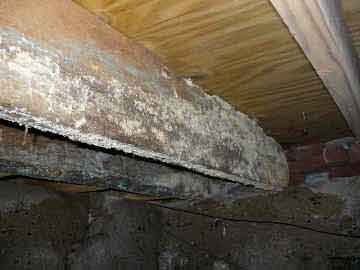 That is a great question. The least expensive option is prevention. Clean your gutters at least once per year (more if you have a lot of trees surrounding your home). While you have your ladder out, you should look for signs of failed caulking, cut out any bad spots and replace with new. If you don’t have the time or are already looking at some repairs, the next least expensive option is to do the discovery yourself: remove the damaged wood, siding, trim back bushes and trees to have good access, dispose of the debris, clean those gutters and downspouts or try to fix the underlying cause of the dry-rot if you can, etc. Once all the discovery has been done and the damaged wood has been removed, you can invite multiple contractors over to bid putting it back together. (Of course, you need to know when to say when. For example, opening the siding and leaving compromised structural pieces so that I know what I need to order when it comes time to replace is critical.)
That is a great question. The least expensive option is prevention. Clean your gutters at least once per year (more if you have a lot of trees surrounding your home). While you have your ladder out, you should look for signs of failed caulking, cut out any bad spots and replace with new. If you don’t have the time or are already looking at some repairs, the next least expensive option is to do the discovery yourself: remove the damaged wood, siding, trim back bushes and trees to have good access, dispose of the debris, clean those gutters and downspouts or try to fix the underlying cause of the dry-rot if you can, etc. Once all the discovery has been done and the damaged wood has been removed, you can invite multiple contractors over to bid putting it back together. (Of course, you need to know when to say when. For example, opening the siding and leaving compromised structural pieces so that I know what I need to order when it comes time to replace is critical.)
Our last dry-rot job was a pier and post addition on an older home suffering from a “little dry-rot”. The homeowner knew that they were many years past due on maintenance and hired us to have discover the extent of the problem. It is not possible to know if the wall under the small spot of dry-rot is also affected. It turned out that we had to replace all the skirting, rebuild the lower part of the back porch.
Imagine having a small car accident. You take your car to a body shop. The body shop will give you a quote on the paint and the bumper cover. They will not quote anything beyond what they can see. Such is the case with dry-rot. Most reputable companies will give you an hourly rate per worker with materials marked up a certain amount as well. We charge for all materials delivered by vendors, but do not charge for consumables such as saw blades or anything that we have in our shop left over from previous jobs. We ask you at the end of your job if you want to keep the leftover material or donate it to Habitat for Humanity or to our next client.
VIEW SOME OF OUR DRY ROT PROJECTS BELOW
Dry Rot and Termite Damage – 5 Stars!
David and his crew stepped into a nightmare when we discovered dry rot and termite damage to the back of our house of a scope we could not have foreseen. It was definitely nerve racking to face not only the initial damage we found out about, but how extensive it became. David was sensitive to how he communicated bad news to us as he kept us informed.
Dry Rot Repair: Roof & Gutters
Maintaining your roof & gutters is your best defense against dry rot repairs. Reputable contractors will only do dry-rot repairs on a “time and materials” basis unless it is absolutely clear on what is being fixed and what is not. A a home owner, you might be nervous about signing a blank check when it comes to repairs, but that is where the reputation of your contractor is paramount.
Improper Flashing Leads to Dry Rot
After repairing storm damage on a clients roof, the owner asked us to look into the cause of some dry rot. When dry rot occurs, the fungi break down cellulose and hemicellulose, the components which give the wood strength and resilience. We found that almost all the roof penetrations were improperly flashed by the original roof installer which led to dry rot in multiple layers of the roof structure.

